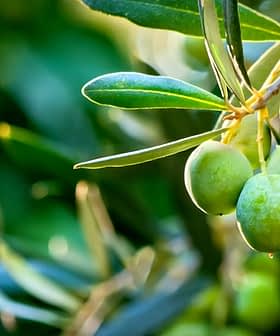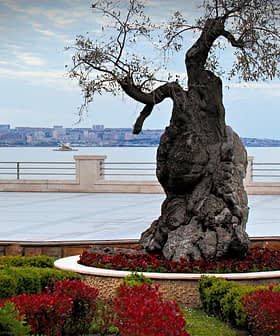IOC Approves New Limits for Fatty Acids, Restoring 'Extra Virgin' Status to Southern Italian Varieties
The International Olive Oil Council approved new limits for fatty acids, allowing some varietals with unique chemical makeups to meet the parameters for the extra virgin grade.
 An olive grove in Calabria, Italy.
An olive grove in Calabria, Italy.The International Olive Oil Council (IOC), during the plenary session in Tunisia, approved new parameters for fatty acids allowing specific varietals with unique chemical makeups to meet the parameters for the extra virgin grade.
With the new measure, the limits of the heptadecanoic acid (C17:0) and heptadecenoic acid (C17:1) will be respectively increased to 0.40 percent and 0.60 percent, while for the eicosenoic acid (C20:0) the limit is set at 0.50 percent.
This permits genuine extra virgin olive oils like Carolea and Coratina, that based on the old limits could not be classified as oils extracted from olives, to have now a regular position.
“This new decision, a result of a work carried out thanks to the synergy between government and national industry, further enhances the authenticity of the Italian olive oils and varietal richness that contributes to their high quality,” the Ministry of Agriculture, Food and Forestry stated in a press release.
The request for a review of the limits has been the focus of negotiations in recent months between Italy, the EU Commission and the member countries of the IOC. One of the protagonists of the reassessment has been Lanfranco Conte, a leading expert in olive oil chemistry, a professor of food chemistry at the University of Udine, and a member of the IOC’s chemistry expert group.
Olive Oil Times met professor Conte to talk about the modification that he elaborated with Maurizio Servili, a professor of food technology at the University of Perugia, and Angelo Faberi, of the Central Inspectorate for the protection of quality and fraud prevention of food product (ICQRF), which restored the status of extra virgin olive oils produced from two varieties in particular: Carolea from Calabria, and Coratina from Apulia.
“With the adoption of an overall method in the framework of IOC and EU, it has become necessary to use two decimal places for the calculation of fatty acids,” Conte explained. “The second decimal place added was, slightly recklessly, the zero, which means that the percentage 0.3 allowed the olive oils that reached 0.34 to be regular, while relying on 0.30 the olive oils that come to 0.31 were non-compliant.”
Conte added that, in previous years, cultivars from Calabria in particular had values of heptadecanoic acid and heptadecenoic acid slightly above the legal limit highlighting the need to revise the standards.
Assuming that the C17 is not present in large quantities in extra virgin olive oil, and is practically absent in any other vegetable oil, meant that the increase of C17 would not lead to any fraud and the group of experts could ask for the increase to the benchmark. Meanwhile, C20 was slightly higher than the previous limit in Coratina oils and, since its increase had no consequences either, they urged the IOC to raise the legal limit.
The need for the revision was expressed last fall during the conference of the Accademia Nazionale dell’Olio e dell’Olivo (National academy of olive oil and olive tree) in Spoleto and, in December, Conte, Servili and Faberi prepared a hypothesis for the modification of the limits that was sent to the relevant institutions, namely the Ministry of Agriculture, the IOC and EU Commission.
During the meeting of the IOC chemists held in April, the modification was accepted by the member countries and the new limits will be put in place for the EU at large.
Within the IOC a specialized group has been formed to work with olive oils whose compositions do not perfectly meet the standards, and that usually come from defined areas.
For instance, the delta-7-stigmastenol, which can also reveal the presence of sunflower and safflower oil, concerns production from the area of eastern Aegean Islands, Palestine and Syria, while an excess of campesterol, which grows if you add other vegetable oils, mainly concerns Southern Hemisphere oils from Argentina and Australia.
“In the case of the fatty acids we are talking about, there is no possibility that the expansion of limits would facilitate frauds, and this variation permits genuine extra virgin olive oils like Carolea and Coratina, that paradoxically based on the old limits could not be classified as oils extracted from olives, to have now a regular position,” Conte concluded.








